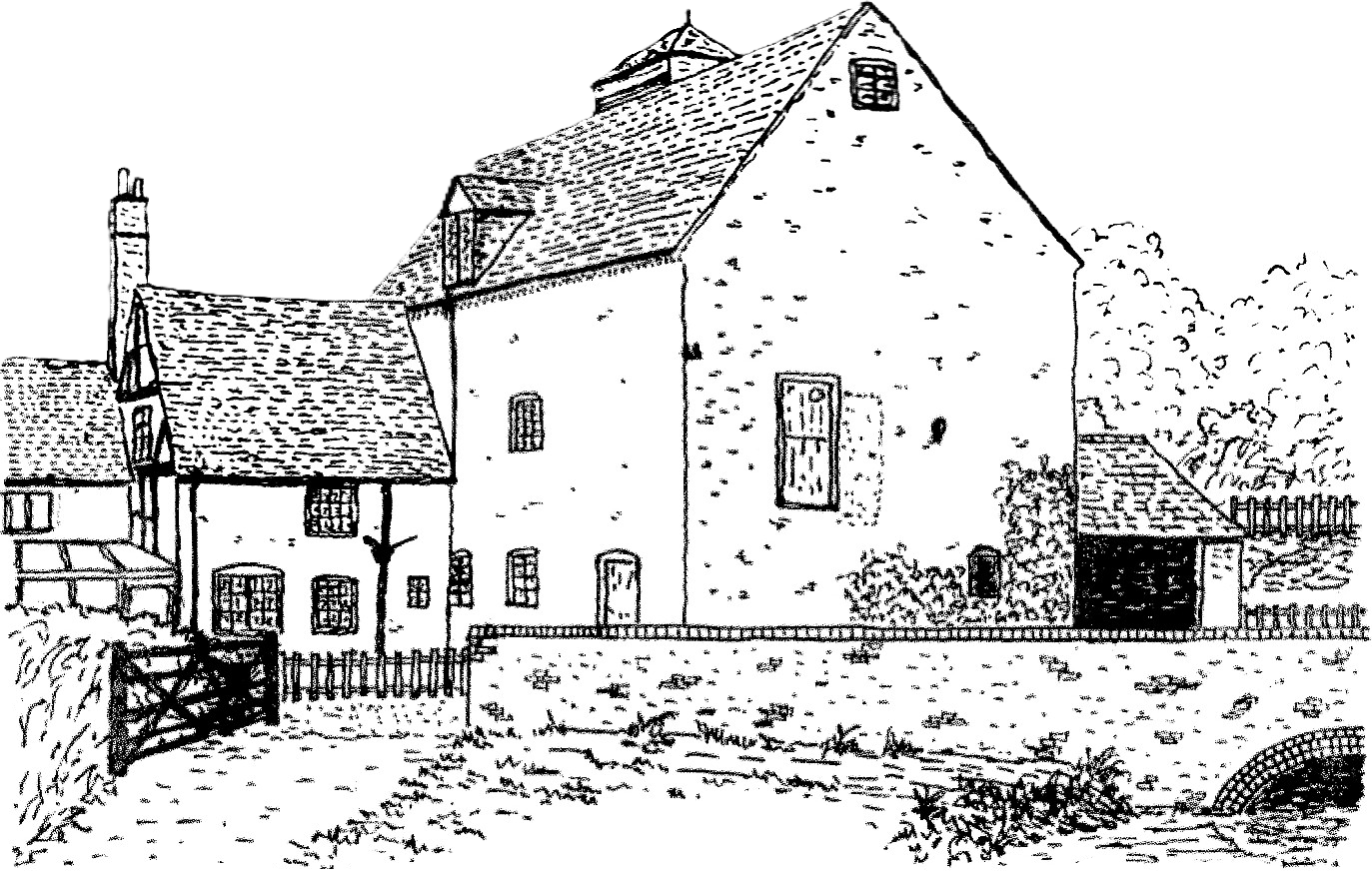A Short History of New Hall Mill
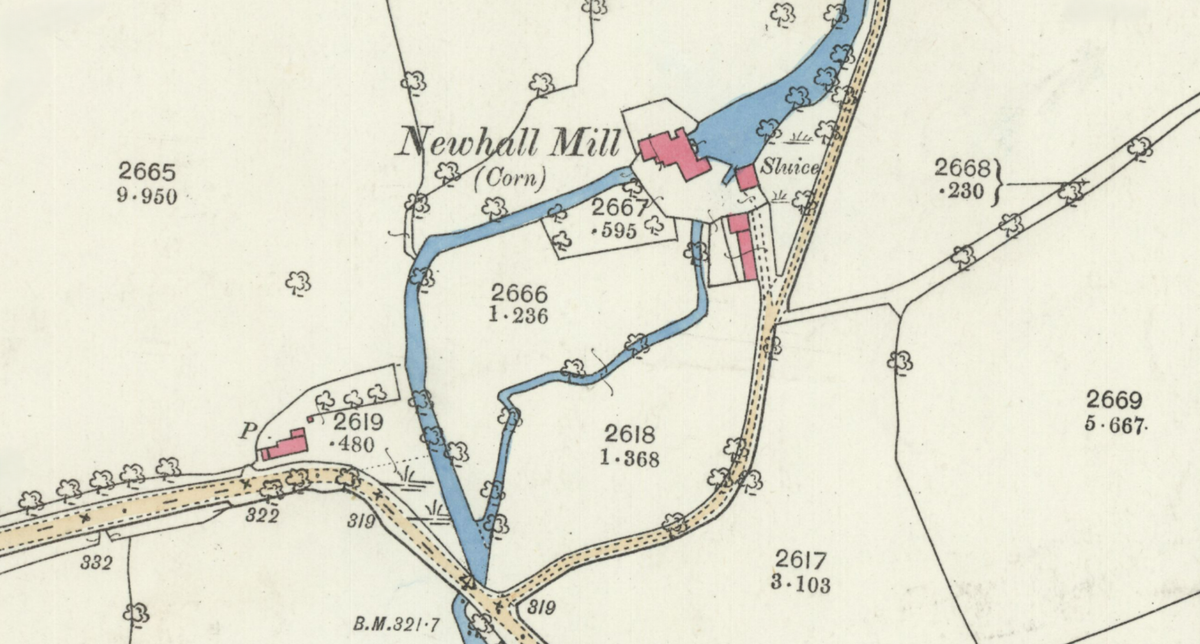
The first watermill on the site of New Hall Mill was built for one of the Gibbons family, perhaps for Thomas Gibbons, who owned New Hall from 1543 to his death in 1575, for his eldest son Thomas, who inherited it, or his for his third son William, who bought it from his brother in the 1580s and kept it until his death in 1593.
Little archival material survives for the Mill until 1709, when the New Hall estate was owned by George Sacheverell, and a new lease was issued for the Mill.
It is important to recognise that the story of New Hall Mill always comprises of three parties:
- the freeholder - until recently, the owner of New Hall and its estate
- the leaseholder - generally a well-to-do businessman in a related industry - these have included farmers, bakers, and corn dealers
- the miller - often a skilled journeyman, sometimes an heir of the leaseholder who was learning his trade 'at the coal face'.
The mill at that time was on a much smaller footprint than today, and consisted only of a single-storey building. The new 1709 lease dated 29th September 1709 states that the Mill then had four pairs of stones, but it does not tell us whether these were driven by two wheels or four. It shows that the previous leaseholder of the mill and cottage had been John Powers, a gentleman who also held the lease of Sutton Coldfield's old town mill. As future leases at the mill were usually issued every 21 years, we can fairly safely assume that John Powers had taken over the lease of the Mill in 1688. He had certainly lived off-site, as the mill cottage was now described as 'lately pulled down'. All that remained of it was the 'toft' or foundation.
Although it was usual in those days for the tenants to repair and maintain property, in this instance the owner of New Hall, George Sacheverell, undertook to rebuild the derelict miller’s cottage. The lease specified that he must "cause to be erected and built and finished upon some place near the said mill a convenient dwelling house necessary and fitting for the use of the said mills,” before 29th September 1710.
The new leaseholders in 1709 were John Holloway and Robert Hicks, both of whom were bakers from Birmingham. They probably owned other mills. The terms of the lease were to be 21 years at £30 per annum and included a stipulation to provide "a pair of capons at Christmas."
George Sacheverell probably rebuilt the miller’s cottage in 1710, in accordance with the terms of the 1709 lease, using part of the existing mill building as an adjoining wall. Holloway and Hicks certainly employed a miller to operate the mill, and probably offered the newly rebuilt cottage as an incentive for a new miller. It is not 100% certain who they first employed, but it was probably Thomas Twamley, the first of the Twamleys at the mill.
On George Sacheverell's death in 1715, an important change took place. He bequeathed New Hall and New Hall Mill to his great-nephew Charles Chadwick, but divided off New Shipton Farm, a farmstead just to the east of the mill, and bequeathed it to Ralph Floyer of Hints, his niece’s husband. It remained part of the Penns estate for many years after this. When George Sacheverell made his will, Thomas Twamley was described as the tenant of both New Hall Mill and New Shipton Farm. For this reason, the mill was often referred to as New Shipton Mill, despite the fact that the two properties were on different estates.
It is probable that from then on, each Twamley miller lived at New Shipton while the junior generation lived in the miller’s cottage, learning their trade and inheriting the New Shipton lease when their parents passed on. You can read the history of the Twamley family and their involvement in the Mill in a separate post.
After William Twamley's death in February 1825, a new lease, dated March 25th 1825, was granted to Benjamin Brentnall the younger, a miller from Borrowash in Derbyshire. The property included fourteen acres of meadow, and a stone house in Wylde Green Road, known as the Ford-Keeper’s Cottage. Brentnall's rent was £110 per annum, together with some sweeteners for his landlord: a couple of fat pullets a year, a wagon and team for one day a year, the care of a dog for Chadwick’s use, and the cost of all repairs. Chadwick reserved the right to hawk, fish and fowl on the land, and the use of water from the leat to flood the water meadows in the winter.
This must have been a short-term let, as the last William Twamley was at the mill when the lease was advertised in 1832.
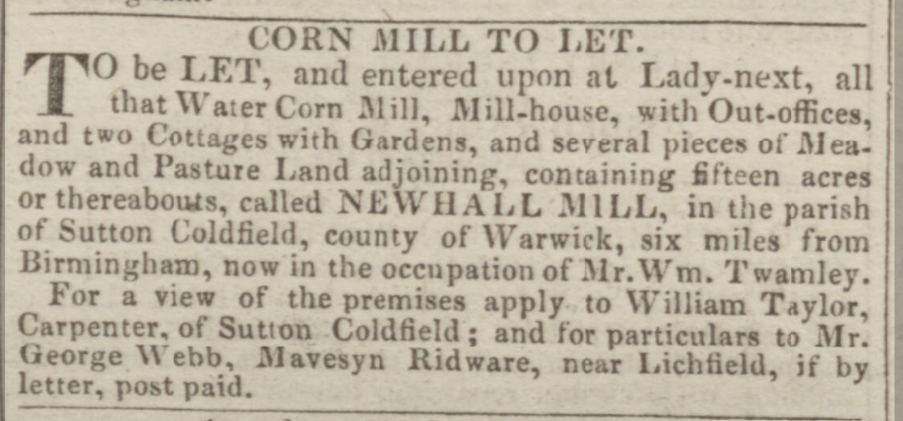
A new tenant, Joseph Todd, took over New Shipton Farm (he was the tenant in 1837).
The next leaseholders were the Duttons. William Dutton was already involved in the milling business. He was the miller at Longmoor Mill from 1825 to 1850. He was living at Sutton Park at the time of the 1841 census, and he employed a male servant called Joseph Hopkins. Some time between 1841 and 1846, possibly when the the next lease renewal came up in 1846, William Dutton took on the lease of New Hall Mill.
In the 1841 census the miller at New Hall was listed as John Bridge, age 40. His wife Elizabeth was about the same age. Living with them was John Millward, a male servant aged 50, perhaps an assistant at the mill.
The year 1846 held both joy and tragedy for William Dutton. His daughter Ann married Charles Henry Brockas, known as Henry, a miller employed by her father at New Hall Mill; but in November there was a terrible tragedy at the mill, described in another post.
Improvements to the mill may have been made in about 1850, perhaps replacing the internal wheels with a new external wheel.
In the 1851 census, William Dutton was living at Warren House on the New Hall estate, with his wife Frances, a waggoner, a cowman, and his four-year-old granddaughter, Ann, daughter of Henry and Ann Brockas. William was described as a farmer of 150 acres, employing 8 labourers. He was also described as a miller and baker employing three men and one boy.
Meanwhile, his daughter Ann, aged 27, was living with Henry Brockas, now aged 30, at New Hall Mill with their little son William, aged 2, along with two journeyman millers, Robert Rochford and Thomas Roggers. Henry Brockas was still the miller at New Hall in 1854 when his second son, Henry junior, was born.
William Dutton died in 1855, at the age of 57, a month after his wife Frances, and Henry Brockas died three years later, in 1858, at the young age of 36. Aris's Birmingham Gazette reported:
On the 17th inst., at the Warren House, Sutton Coldfield, deeply regretted by his family and friends, aged 36, Mr Charles Henry Brockas.
By 1861, Henry's widow, Ann Brockas, was living at Warren House with her five children, and was running her father William Dutton's farm.
The miller at New Hall Mill listed in the 1861 census was Joseph Brighton, aged 51. He lived with his wife Jane, aged 32, his son Joseph, aged 7, and his daughter Hannah, aged 4.
The Mill underwent various rebuilding changes throughout the years. Roger Lea of Sutton Coldfield Local History Research Group states that "the Dutton brothers, new tenants in 1861, laid out nearly £800 on bringing the mill machinery up to date, but five years in to their lease William Dutton died, and the remaining sixteen years of the lease were transferred to Adcocks of Tamworth, who paid £1,000". This timeline is a little different and needs further investigation.
During the major alterations in the 1870s and 1880s, the internal waterwheels were replaced by a single overshot waterwheel housed in an external wheelhouse and capable of driving the two pairs of relocated stones. This required the Stone Floor to be raised to give sufficient height to accommodate the machinery installed on the Ground / Machinery Floor.

In 1889 Edward Caldicott became the miller at New Hall Mill. He and his family are recorded at the Mill in the 1891 Census. The household's members were Edward, aged 45, his wife Agnes aged 32, six of their ten children: Ellen, Sarah, Cecil, Baron, Harold, and Birdie, and Arthur Dayman, a carter aged 20. The family remained at the mill for nine years.
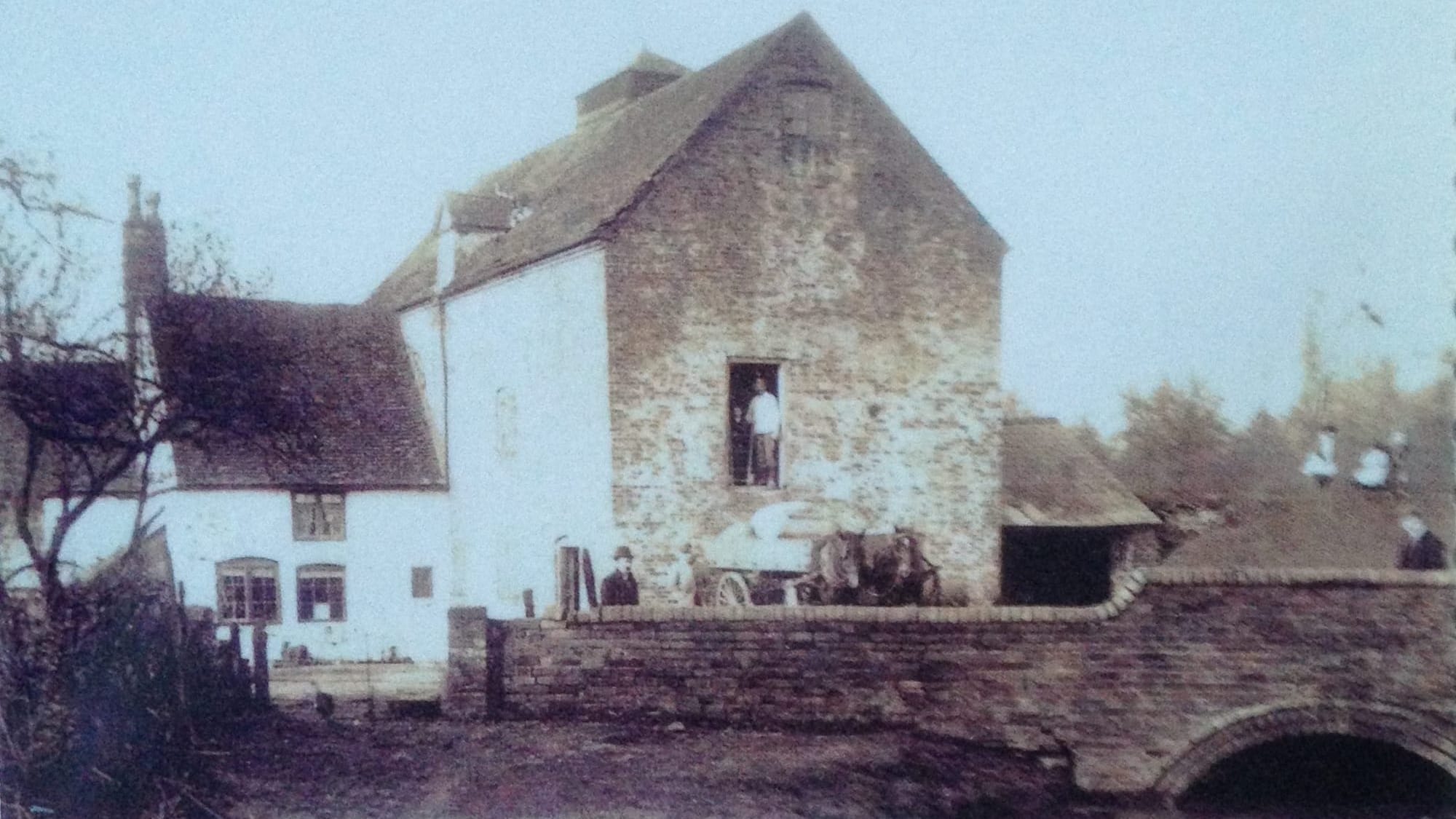
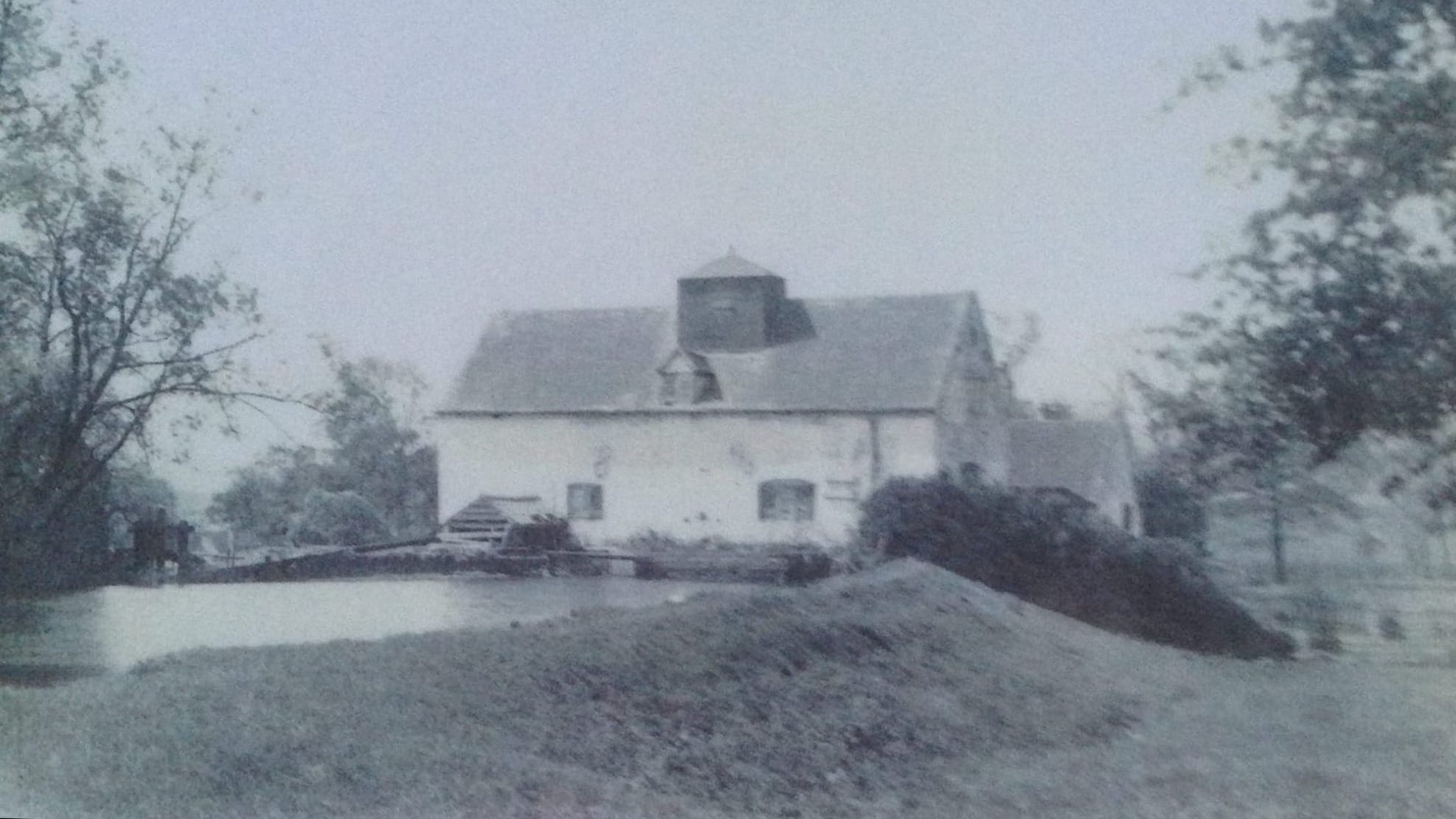
In 1898 Benjamin Styles became the miller. Here is an advert from the Warwickshire Herald on 8 December 1898:

In 1899 he supplied a loaf to Queen Victoria.
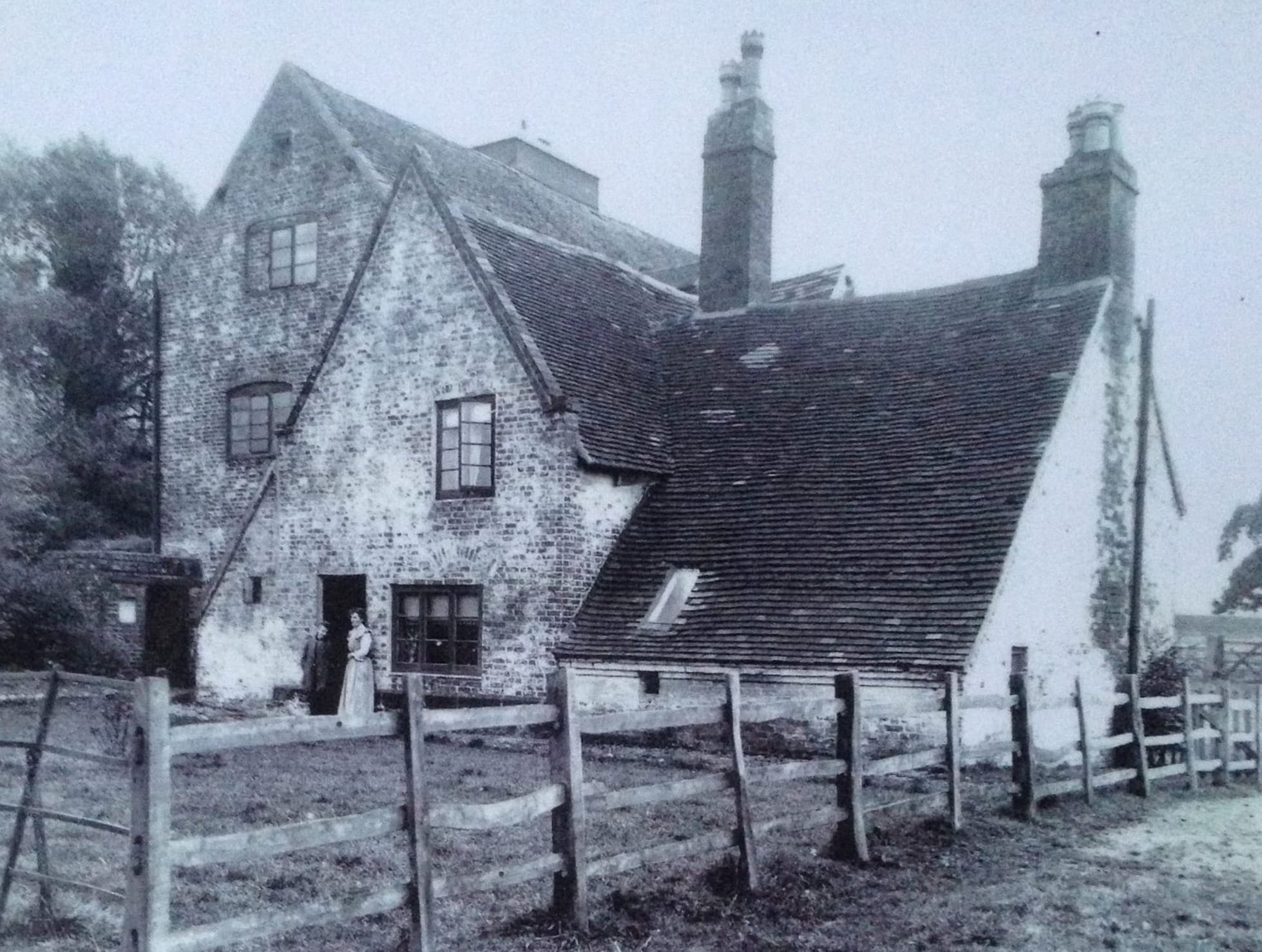
In 1923 Benjamin Styles bought the mill, but in 1928 the mill was returned to the New Hall estate.
The following year, 1929, a new miller arrived: Charles G Davis. He was later succeeded by his son Ben Davis.
The Ruston Hornby diesel engine was installed in 1949. Larger roller mills could now provide better quality flour at a lower price, so the miller abandoned flour production and concentrated on part-time production of grist or animal feed. He considered the waterwheel as an unreliable power source.
The use of water power for flour production was abandoned altogether in 1960 with the diesel engine being used intermittently to power a very noisy hammer-mill to produce the animal feed.
In 1970, electricity was connected to the mill.
In 1972 Sir Alfred Owen made plans to restore the watermill. Ben Davis continued to run the mill until his death in 1993, when commercial milling ceased.
Over the next three years, the New Hall Mill Preservation Trust prepared the mill for opening to visitors.
In 1996 the mill opened its doors to the public for the first time. It was to be maintained by the Friends of New Hall Mill.
On the August Bank Holiday 2005, New Hall Valley Country Park opened.
The Mill and its meadow field are still privately owned, and they are managed by the New Hall Water Mill Preservation Trust.
New Hall Mill is a Grade 2* listed building, and one of only two water mills still surviving in the Birmingham area. Now restored to a working condition, New Hall Mill is a significant local example of our industrial heritage and has been described as 'Sutton's little gem'.
